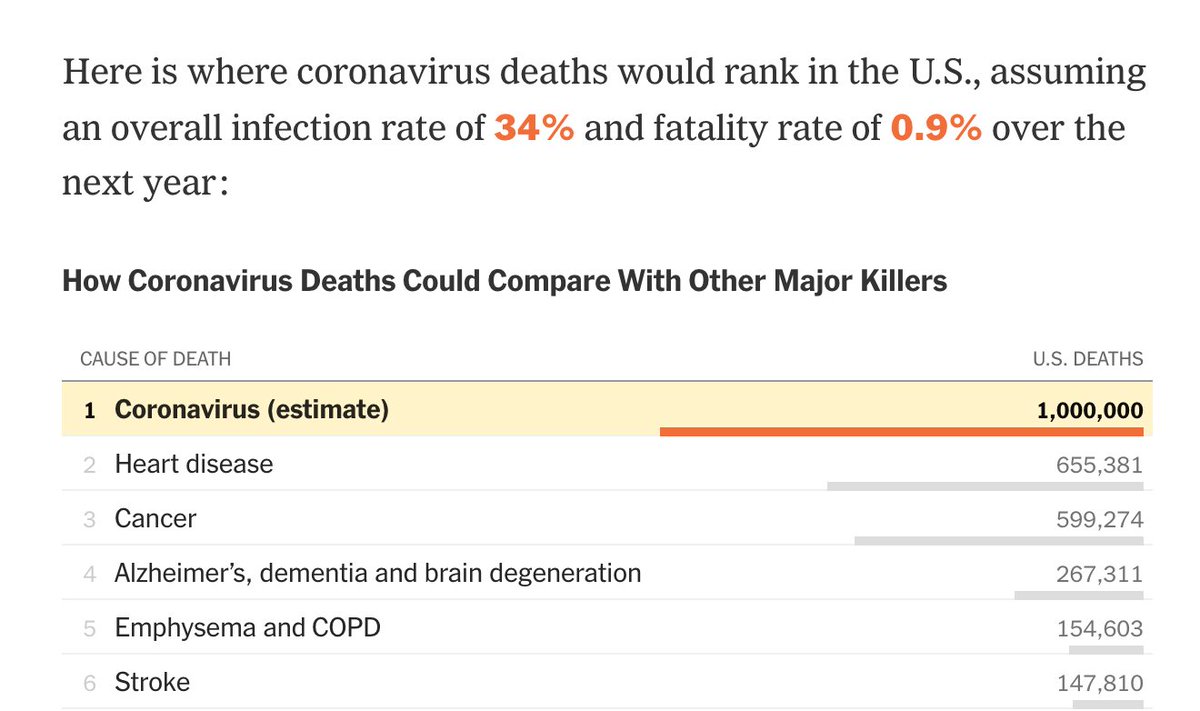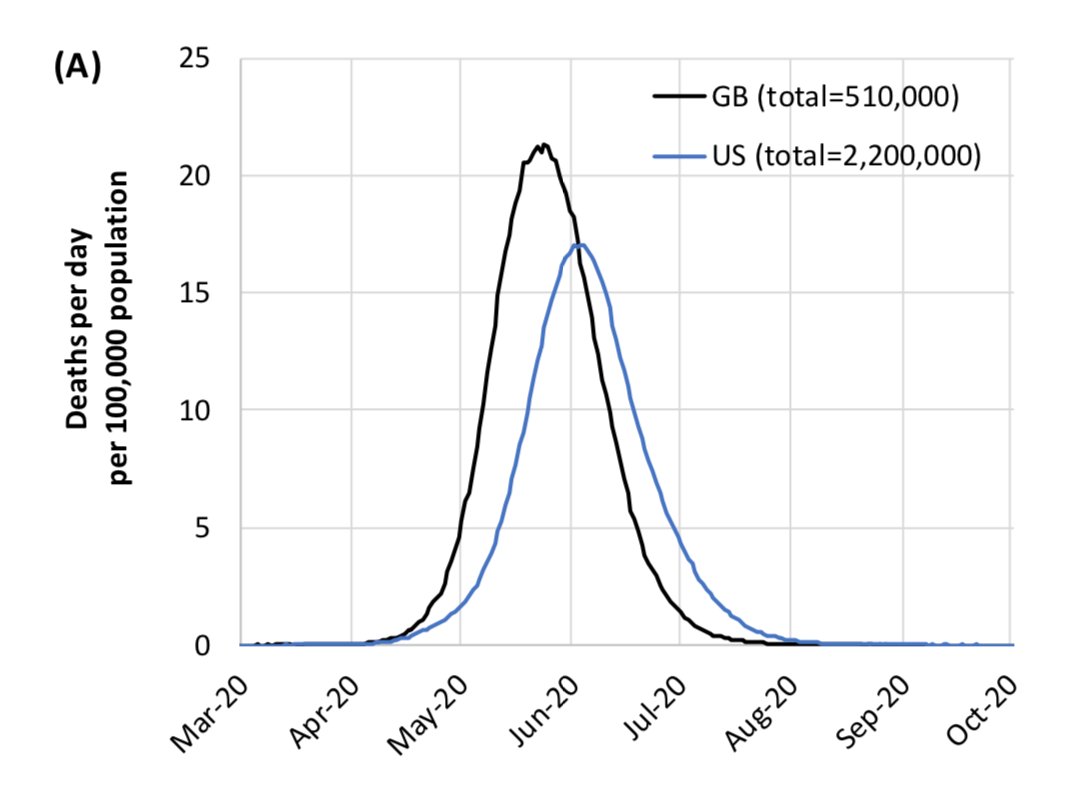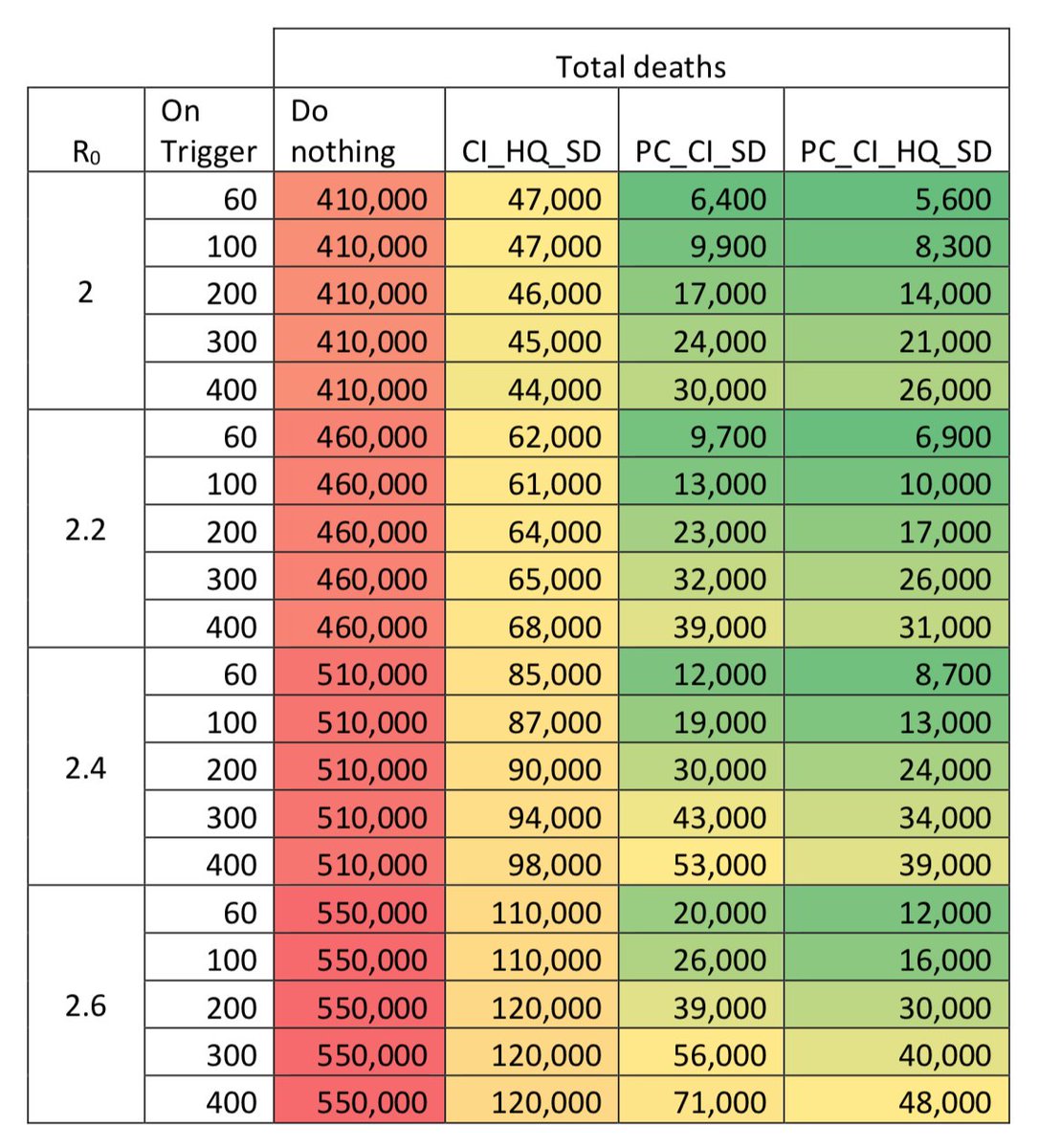I read the paper and will summarize it here. It is sobering.
imperial.ac.uk/news/196234/co…
• Millions of lives are at stake
• Intermittent but ongoing society-wide measures needed to suppress the outbreak & avoid swamping ICUs
• Merely slowing the spread without reducing # of cases can only reduce deaths by ~50%
• “Stay home when sick” not enough
Now with an academic paper and a more sophisticated model, maybe more people will believe it.
Fortunately, we're already starting to act, so this worst case won't come true.
But how much of it might come true? How much will interventions help, and which ones do we have to take?
With suppression, you save lives, but you have to keep up the measures indefinitely, until a vaccine or treatment.
In other words, still over *1 million* deaths in the US—making it by far the top killer of 2020.
(Calculations and table from nytimes.com/interactive/20…)

Because intense measures can't be sustained indefinitely, the paper considers a “trigger” model: broad interventions start when the # of ICU cases hits a threshold, and last until it is below another threshold.
Until a vaccine is available, or until the number of cases is low enough that we can “adopt intensive testing, contact tracing and quarantine measures” like South Korea.
But this only makes the bottom line *stronger*, which is that moderate measures will cost millions of lives.
But again the conclusion remains: strong action is needed.
• Seasonality: is it less virulent in summer?
• Re-infection (they assume lifetime immunity)
• Other interventions, such as masks, or working from home
• Short term: Broad-based isolation; increase ICU capacity
• Medium term: Fast, cheap, ubiquitous testing; case isolation and contact tracing (end/relax broad-based isolation)
• Long term: Vaccine and/or pharmaceuticals









